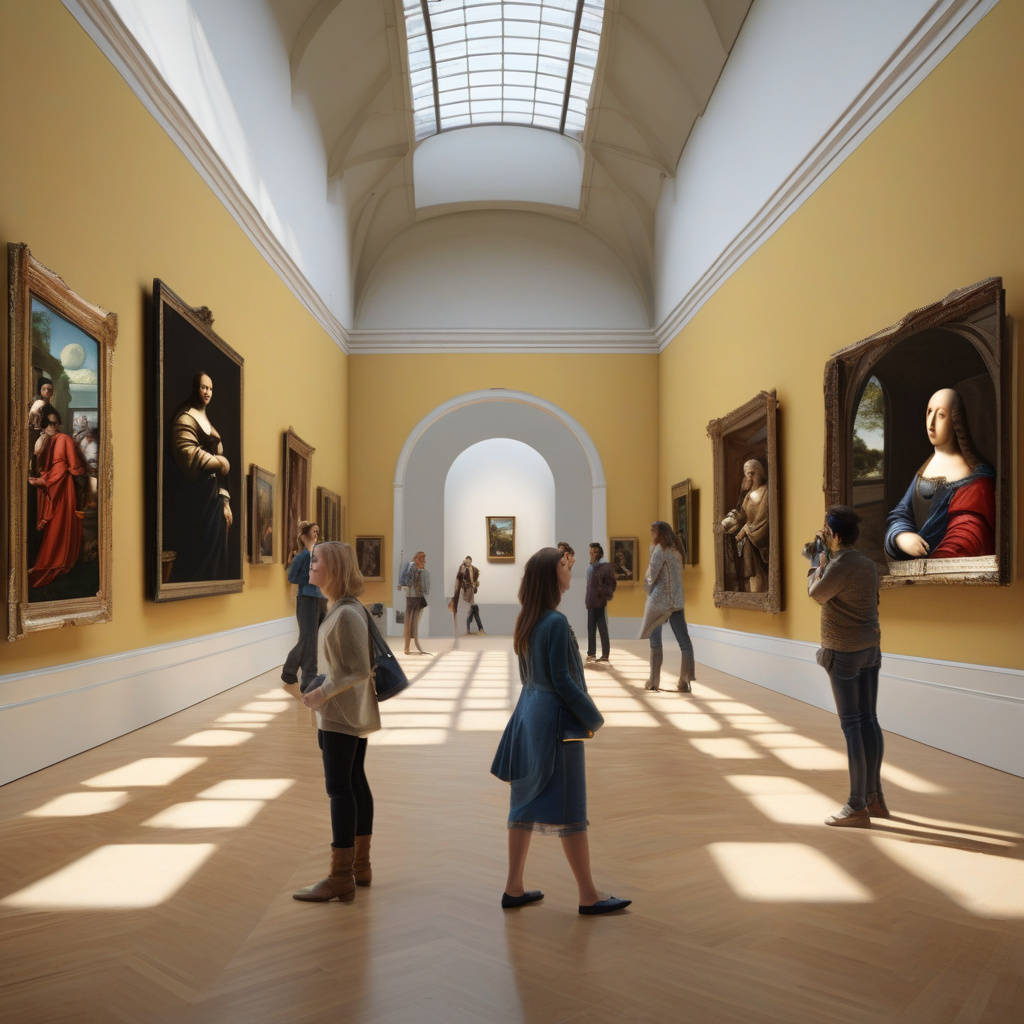Is the Art Market AI-Proof?
In recent years, the intersection of art and technology has become a hot topic, with artificial intelligence (AI) carving a niche in the creative landscape. As artists experiment with AI to produce innovative works, questions arise about the implications for the traditional art market. Marc Spiegler, a seasoned expert in the art industry, argues that despite the rise of AI-generated art, the core business of art remains largely unaffected. This article explores Spiegler’s perspective and examines whether the art market can truly withstand the influence of AI.
The growing presence of AI in the creative process is undeniable. Artists are increasingly using algorithms and machine learning to create pieces that push the boundaries of traditional art forms. For instance, generative art uses AI to produce unique visual works based on specific parameters set by the artist. This innovative approach has captivated audiences and collectors alike, leading to a surge in interest and investment in AI art.
However, Spiegler posits that while AI offers exciting possibilities for artistic exploration, it does not pose a significant threat to the established art market. He emphasizes that the value of art is not solely derived from its aesthetic appeal but is deeply rooted in the artist’s intention, narrative, and context. The emotional resonance that human artists bring to their work cannot be replicated by machines, which ultimately preserves the significance of traditional art.
One critical aspect of the art market is the relationship between artists and collectors. Spiegler argues that collectors are motivated not only by the artwork itself but also by the story behind it. This connection is integral to the perceived value of the piece. For instance, a painting by a renowned artist like Banksy carries immense value not just because of its visual appeal but also due to the story and social commentary that accompanies it. AI-generated art, while intriguing, often lacks this personal narrative, making it less appealing to collectors who seek a deeper connection.
Moreover, the art market thrives on exclusivity and rarity. Original works by established artists can command millions of dollars at auction, while AI-generated pieces tend to be more reproducible and accessible. Spiegler highlights that collectors are often drawn to the uniqueness of a piece, and the mass production capabilities of AI art may diminish its desirability. As such, the traditional art market’s emphasis on rarity and uniqueness ensures its resilience against the rise of AI.
Additionally, the art market is built on a foundation of trust and authenticity. Provenance, or the history of ownership of a piece, plays a crucial role in determining its value. Established artists have a recognized track record, which adds credibility to their work. In contrast, AI-generated art often raises questions about authorship and authenticity. If a machine creates a piece, who is the true artist? This ambiguity can create skepticism among collectors and investors, further solidifying the position of traditional artists in the market.
Furthermore, the art world encompasses more than just the creation of pieces. The business side involves galleries, auctions, and exhibitions, which have established networks and practices. These entities are often resistant to change, and they thrive on the human connection that art fosters. Spiegler points out that galleries and curators play a vital role in promoting artists and their work, creating a sense of community that AI-generated art struggles to penetrate. The curation process, which involves selecting pieces that resonate with audiences, relies heavily on human judgment and expertise.
Despite the challenges posed by AI, it is essential to recognize the potential for collaboration between artists and technology. Rather than viewing AI as a rival, many artists are integrating it into their creative processes, using it as a tool to enhance their work. This symbiotic relationship could lead to the emergence of new art forms that enrich the market rather than disrupt it. By combining human creativity with AI capabilities, artists can explore uncharted territory while maintaining the core values that define traditional art.
In conclusion, while artificial intelligence is reshaping various industries, the art market appears to remain largely resistant to its impact. Marc Spiegler’s insights highlight the importance of human intention, narrative, and authenticity in determining the value of art. As artists continue to experiment with AI, the enduring appeal of traditional art and its unique connection to collectors will likely safeguard the market’s stability. The art world may witness the integration of AI as a tool for creativity, but it seems poised to retain its essence amidst technological advancements.
artmarket, artificialintelligence, creativity, traditionalart, MarcSpiegler
